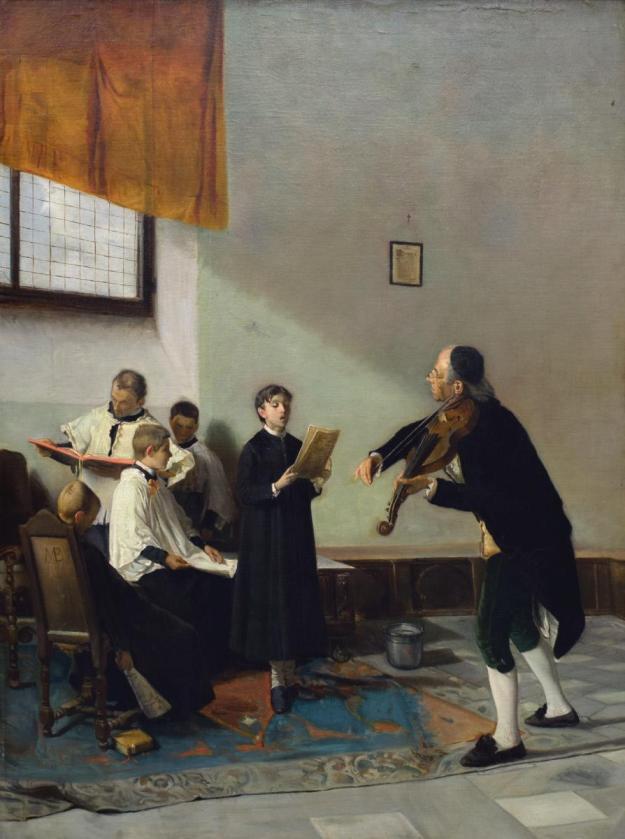- Reading Public Museum
Open 11a-5p DailyAdmission - Neag Planetarium
Show ScheduleAdmission - Arboretum
Open everyday from sunrise to sunset

The son of portraitist Giosuè Bianchi, Mosè Bianchi was born in Monza and studied at the Brera Academy in Milan. Bianchi rose to become one of the most important Italian painters of the late 19th century, whose subtle, luminous palette not only placed him at the forefront of Italian naturalism, but was also deftly able to translate the subtle harmonies of light.
He received an award for his Conversion of St. Paul, which enabled him to visit Venice, Rome, and Paris in the late 1860s. In Venice, he came under the influence of the old master Tiepolo, as well as contemporaries Giacomo Favretto and Mariano Fortuny (also represented in this gallery), whose luminous palettes and playful subjects informed his work. By the 1880s, Bianchi’s treatment of genre and marine themes was increasingly free and impressionistic.
This work shows a group of choir boys diligently rehearsing for their performance on the eve of a feast day celebration. The scene takes place in a sparsely furnished room; sunlight streams through an elevated window, bathing the group in warm light. The energy of the standing violinist is contrasted by the young boy slumped over in the chair, music in hand, seemingly exhausted from the rigors of practice.